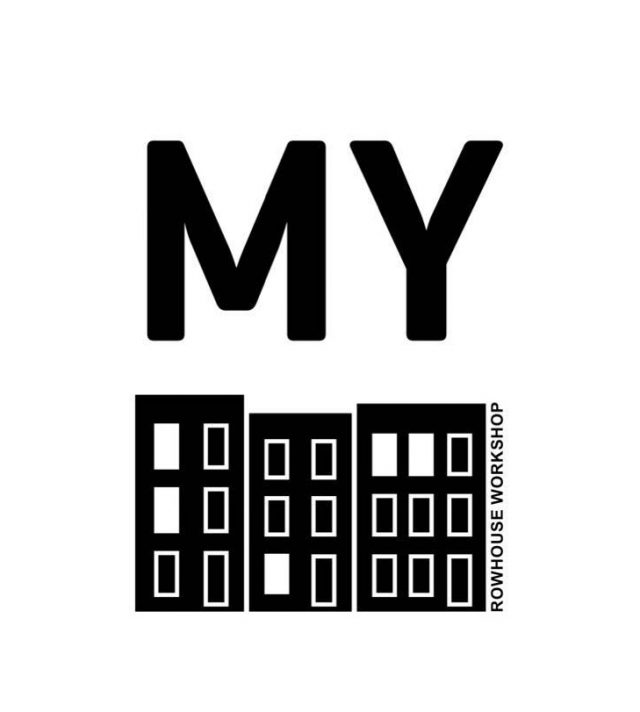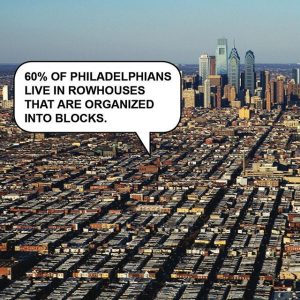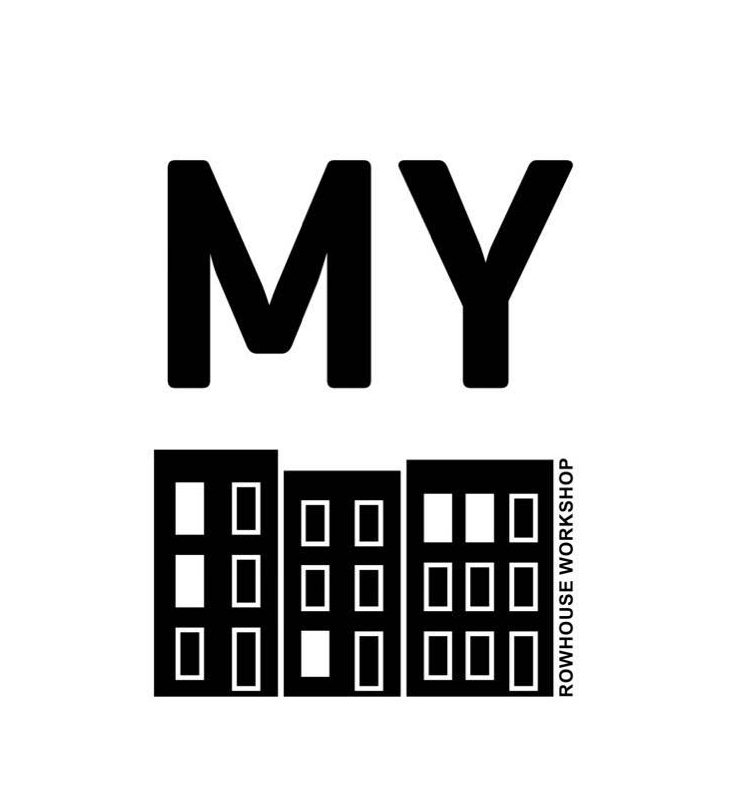Rowhouse Workshop

On March 7, a group of South Philadelphia neighbors gathered at the East Passyunk Community Recreation Center to talk about their block of Jessup Street. A map of the block decorated a long table. Brian Phillips, founder and principal of Interface Studio Architects, led a discussion centered on open-ended questions.
- “Where were you born, and how did you come to live on the block?”
- “Do you have any personal objects that tell the history of your neighborhood?”
- “Are there any holidays that define your block?”
- “What might you like to change?”
As the two-hour session moved forward, attendees covered the map in arrow-shaped sticky notes and drew with marker. They wrote memories, histories, and present-day observations.
- “Wine press in back basement.”
- “Slept in the vestibule, here. Cool marble during hot summer.”
- “Aunt Phyllis lived here.”
- “Old man Phil – longest resident living on block.”
In 2016, The Pew Center for Arts & Heritage awarded Phillips a grant to conduct a project called Rowhouse Workshop. As part of the project, he leads community gatherings and conducts physical analyses of rowhome neighborhoods in diverse areas. He examines similarities, differences, and historical trends as he gathers data, blueprints, and old photos.
“Philadelphia has a unique rowhome culture,” says Phillips. “Unlike many cities in which factory owners built living space for workers, Philadelphia has always had a separation of business and residential construction. It’s a petri dish for development, which is why you might see three row houses side-by-side with the same features, and two next-door that are different.”
In June, Rowhouse Workshop will open a multimedia display at Cherry Street Pier. Stories, photos, and memoirs of five neighborhood blocks – two in South Philly, one in Northern Liberties, one in Powelton Village, and one in North Philly – will fill curio cabinets. Phillips’s hope is to increase understanding of how blocks of rowhomes contribute to Philadelphia’s social fabric and culture.
“The neighborhood block is the DNA of the city. Our streets are like living rooms. Philadelphia’s unique neighborhood structure requires contributions from everybody, and we need to celebrate that.”
At Phillips’s workshops, neighbors reconnect, share memories, and sometimes meet for the first time. Some live in the house their grandparents owned, or around the corner from where they grew up. Others are new to Philadelphia. At an event in the Centennial District, friends used Phillips’s event to present an award to a beloved block captain who for years gardened and greened her street. In South Philly, it thrilled residents to meet a neighbor whose Christmas display delighted their children.

Rowhouse Workshop isn’t simply about gathering history and maintaining what exists. Phillips feels a sense of professional responsibility as an architect. “Philadelphia has a generous zoning code that allows developers a good amount of latitude in what they design and build. Architects should be thoughtful about maintaining the social structure of neighborhoods. Just because we can build a taller house or a second-floor entrance doesn’t mean it’s a good idea. One deviation can ruin the dynamic of a row of homes. Designers should be creative, but also play according the rules of the neighborhood.”
Rowhouse Workshop showcases this by example.
Brian Phillips is finishing his current phase of Rowhouse Workshop and will let the Passyunk Post know when his display opens this summer on Cherry Street Pier.




